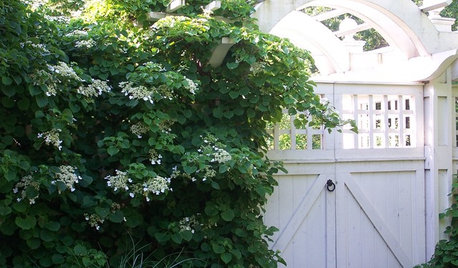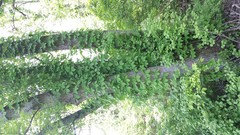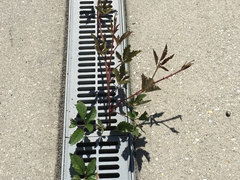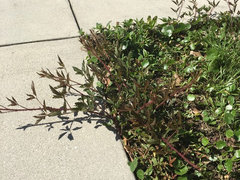Getting completely rid of invasive vines
suwannee75
18 years ago
Featured Answer
Sort by:Oldest
Comments (49)
sugarhill
18 years agoRelated Professionals
West Milford Landscape Architects & Landscape Designers · Grand Haven Landscape Architects & Landscape Designers · Jennings Landscape Architects & Landscape Designers · Frisco Landscape Contractors · Allentown Landscape Contractors · Kaneohe Landscape Contractors · Santa Maria Landscape Contractors · Smyrna Landscape Contractors · Shenandoah Landscape Contractors · Bull Run Specialty Contractors · Bloomington Fence Contractors · Gilbert Fence Contractors · Sun City Fence Contractors · Boulder City Fence Contractors · Coral Gables Window ContractorsIris GW
18 years agoeddie_ga_7a
18 years agoquirkyquercus
18 years agomairenn
18 years agoeddie_ga_7a
18 years agoeddie_ga_7a
18 years agogirlgroupgirl
18 years agoagnespuffin
18 years agotheconstantgardeners
15 years agolittlemissgreenthumb
15 years agovalcritter
15 years agogirlgroupgirl
15 years agoIris GW
15 years agosispl1
13 years agocaseyf
13 years agoJolyn ReBecca Snider
9 years agoatl_veggie
9 years agolast modified: 9 years agojoredford
9 years agoBuford_NE_GA_7A
9 years agotealtealblue
8 years agoTim Givemeenergy
8 years agorobertnixon
8 years agoBailey Construction & Landscape Group, Inc
8 years agoatl_veggie
8 years agobarbjean1213
7 years agolast modified: 7 years agoatl_veggie
7 years agobarbjean1213
7 years agoapprenticegardener
7 years agokillerv
7 years agoLenny Dutton-Williams
7 years agoLenny Dutton-Williams
7 years agoShaylene Mans
7 years agoDiane Anderson
7 years agogenevap
7 years agolenoregraham
7 years agoNamrata Suresh
5 years agoLisa
4 years agoBailey Construction & Landscape Group, Inc
4 years agoLisa
4 years agoBailey Construction & Landscape Group, Inc
4 years agopbon
4 years agoJessie Ejiogu
3 years agoBailey Construction & Landscape Group, Inc
3 years agoBill Gould
3 years agopbon
3 years agoKelly P.
3 years agoQ Spam
3 years agolast modified: 3 years ago
Related Stories

EDIBLE GARDENSNatural Ways to Get Rid of Weeds in Your Garden
Use these techniques to help prevent the spread of weeds and to learn about your soil
Full Story
MOST POPULARHow to Get Rid of Those Pesky Summer Fruit Flies
Learn what fruit flies are, how to prevent them and how to get rid of them in your home
Full Story
GARDENING GUIDESDo You Have This Invasive Plant in Your Yard?
Garlic mustard is spreading across the U.S. Here’s how to spot it and what to do
Full Story
PINK FLOWERSGreat Design Plant: Pink Trumpet Vine Heralds Vibrant Color
Announce your landscape beautification efforts with this flowering vine that perks up hot, dry gardens
Full Story
FLOWERS5 Sensational Flowering Vines for Warm Climates
Splash your garden with bright tropical color from late summer through fall with these showy trailing and climbing beauties
Full Story
EXTERIORSCare and Training for a Vine-Covered Home
Love the look but don’t want the ruin? Learn how to have vine-draped walls without all the cracks and crumbling
Full Story
LANDSCAPE DESIGNSee 5 Unexpected Ways to Use Vines
Vines can grow over slopes, trail off pergolas and add seasonal color to the garden
Full Story
FALL GARDENING6 Deer-Resistant Flowering Vines to Plant This Fall
Have a major deer problem? Here are some of the only vines that have a chance of not being eaten
Full Story
SAVING WATERXeriscape Gardens: How to Get a Beautiful Landscape With Less Water
Conserve water and make gardening much easier with the xeriscape approach’s 7 principles
Full Story
LANDSCAPE DESIGNGet Along With Less Lawn — Ideas to Save Water and Effort
Ditch the mower and lower your water bill while creating a feast for the eyes with diverse plantings and gathering places
Full StorySponsored









vsjo